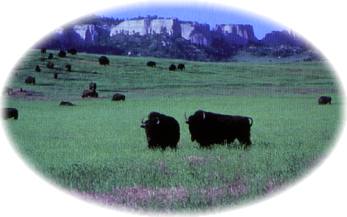

The most obvious and striking attraction to Toadstool Geologic Park is the scenery. The banded layers of clay and ash serve as silent testament to past geologic events that deposited sediments from periodic floods and deep ash layers from volcanoes in the west. The build-up and later erosion, have left an other-worldly landscape that is a magnet for sightseers, photographers, naturalists, and school groups.
Geologists refer to the material forming the eroded buttes and ridges as sediments belonging to the White River Group. They use the subtly colored horizontal bands as a standard against which to compare all other similarly aged deposits in North America. Paleontologists, scientists who study past life forms, are also attracted to Toadstool. They focus on the fossils of long-extinct animals that called the area home during the Oligocene Epoch between 24 and 36 million years ago. From tortoises to titanotheres, their bones continue to be exposed by annual erosion cycles. Some animals left more than their bones to be discovered.
Toadstool includes a fossil trackway that gives scientists an unusual look into the behavior of animals as they migrated along a shallow braided river 30 million years ago. Leaving their tracks in the wet sand, small relatives of today's rhinoceros and larger pig-like scavengers call entelodonts, traveled north to south along a route that is now preserved in stone.
While the migration was likely an annual event, it appears that only once were conditions just right to preserve the tracks. Chance obviously plays a large part in the preservation and discovery of fossils that are millions of years old.
Within the park is a well-marked, universally accessible, interpretive hiking trail along with picnic and camping facilities. The six-unit camping area includes modern vault toilets. A reconstructed sod house illustrates a settlement era building technique. Since trees were not found in great abundance on the Plains, inventive pioneers used what ever material that could find to construct their houses. One of the most popular materials for houses was sod. The house is well preserved, and visitors are allowed to go inside.
The hiking trail running through the Park has an accompanying interpretive brochure to guide hikers along the trail. There is also an interpretive kiosk with information about the Oglala National Grassland, history of the Grassland, and explanation of the geologic forces which created Toadstool Park.